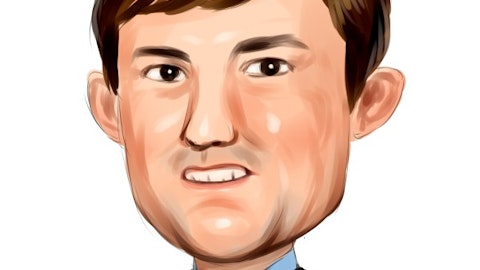North Carolina-based asset management firm Massif Capital, LLC released its first-quarter investor letter last month – a copy of which is available for download here. The fund was co-founded and is currently being co-managed by Will Thomson and Chip Russell. In their recent letter to investors, Massif Capital announced that the core portfolio was up 3.1% in the first quarter.
In the said letter, Massif Capital highlighted a few stocks and Sunrun Inc. (NASDAQ:RUN) is one of them. Sunrun offers residential solar electricity. Year-to-date, RUN stock gained 1.6% and on April 30th it had a closing price of $14.03. Its market cap is of $1.7 billion. Here is what Massif Capital said:
“RUN is a good example of our concerns. The firm sells, or more commonly leases, residential solar systems. Revenue earned is mostly in the form of operating leases and loans to consumers. Operating leases provide RUN roughly 20 years of predictable cash flow from customers who have locked in their electricity rate for the same period. 7 Unfortunately, the underlying business is not profitable, by which we mean selling or leasing solar systems to residential customers does not make money for the firm. Financial engineering, on the other hand, is sometimes profitable: combining a mix federal incentives and accounting maneuvers (modified accelerated cost recovery) allows RUN to sell tax equity packages to investment funds and corporates looking to lower their own tax rates.
While the tax equity investments run through consolidated financial statements, the benefits are primarily stripped out by outside tax equity investors. They have priority on the cash flow. In most cases, even if the underlying asset does not perform and RUN has to absorb customer defaults, etc., RUN still needs to pay those investors. Arrangements hold for about seven years before the ownership of underlying assets flips back to RUN, and they begin accruing the benefit. Equity investors in RUN are left with leveraged risk where the outcome is dependent on the long-term performance of solar panels. The firm is cash flow negative and is increasingly levered. Sunrun is a roofing company with a finance arm focused on complex structured products. In our humble opinion, these are not things that go well together.
A key operating metric for RUN is there ‘net earning assets’, or the difference between the total liftetime value of a project and the upfront cash costs to service that project. Or as RUN may say, “how we turn customer contracts into cash”. We take issue with how the firm calculates the lifttime value of a project.
For instance, the company assumes that all lessees will choose to renew their lease in 20 years and that there will be zero defaults. A Better Business Bureau score of less then two stars out of a possible five stars suggests that a 100% renewal rate in 20 years might be a stretch. A slight dip in renewal rates or defaults causes large swings in the present value of their assets.
Growth in the near-term likely rests with the rate of change in installations in California (about 40% of their current customer base). The recent Californian mandate that requires new properties under three stories to have a PV system may not be as accretive as originally anticipated. Sacramento builders recently petitioned the California Energy Commission for cost relief and won. Instead of adding the price of solar panels to an already steep home price, builders may now take credit for offsite solar power produced by the municipal utility district. Homebuyers thus save the installation costs. 8 We would assume that other contractors may follow suit.
RUN fell ~50% during March. We feel comfortable continuing to hold the position. The company has guided that a ‘reasonable downside scenario’ entails a 50% decline in revenue for the next two quarters. Under this environment, the firm believes they could limit consumption of cash to $30M or less without any capital market activity. We’re not sure how this is possible, quarterly interest payments alone exceed $30M. We take issue with the firm stating that they are cash-flow positive and we don’t think cash arising from the issuance of debt should be included in a cash flow calculation. Sunrun management does.
How long can an unprofitable enterprise stay alive? We suspect this will largely depend on how long the Federal Reserve keeps the printing press turning; nevertheless, RUN is a zombie firm in the making, if it’s not already one.
The wind power industry is maturing into a commercially viable, unsubsidized industry with significant promise for offshore development. We have initiated a long position in the European turbine manufacturer Vestas (VWS). Growth estimates suggest that total wind capacity will increase by ~50 GW per year through 2025. This will add about 8-10% to total installed capacity every year. Limitations are emerging in the onshore wind market as available land is making suitable project development sites scarce. As such, offshore wind is gaining notable traction as installation costs decline making the resource competitive even on a merchant basis in European auctions.”
In Q4 2019, the number of bullish hedge fund positions on RNU stock increased by about 28% from the previous quarter (see the chart here).
Disclosure: None. This article is originally published at Insider Monkey.




